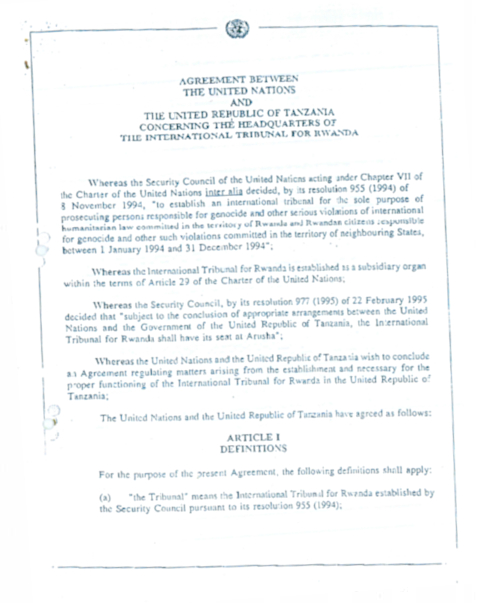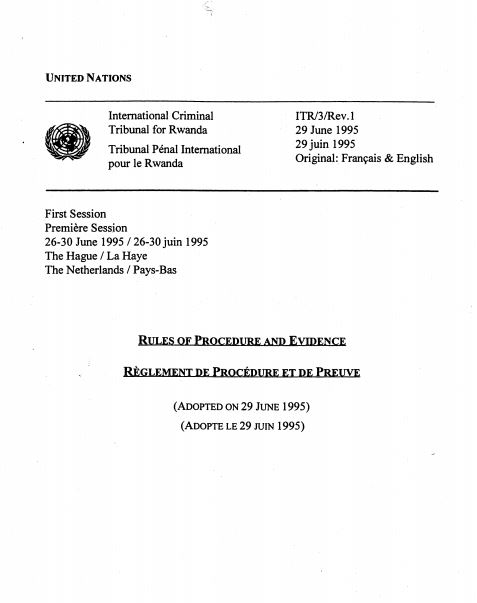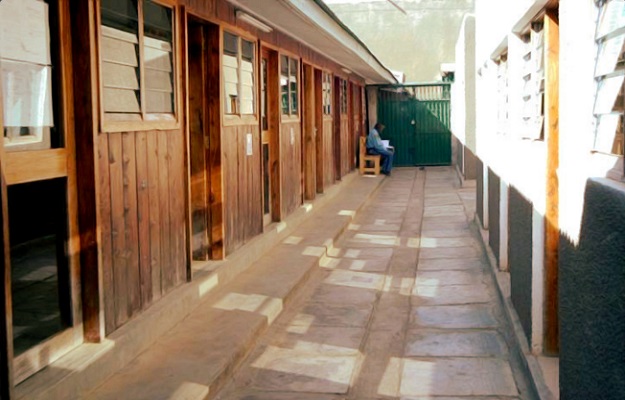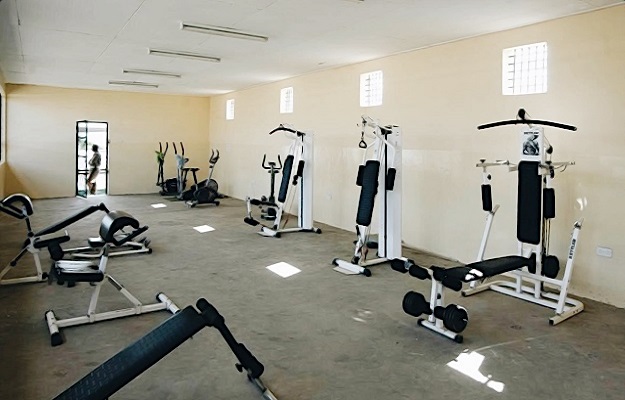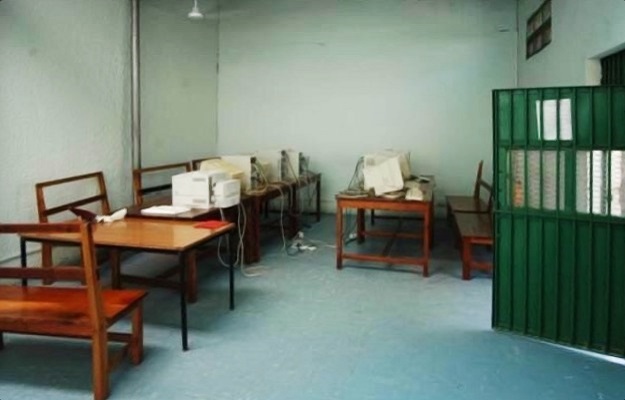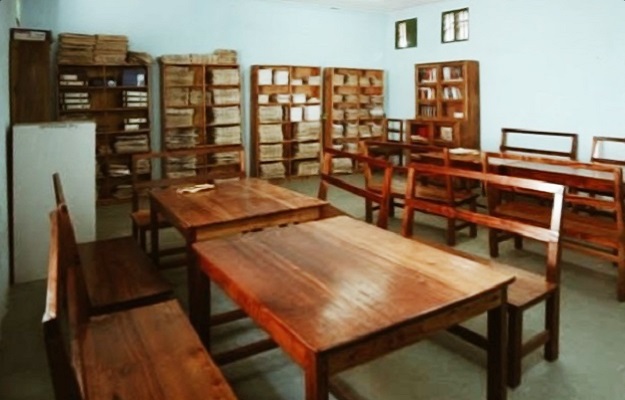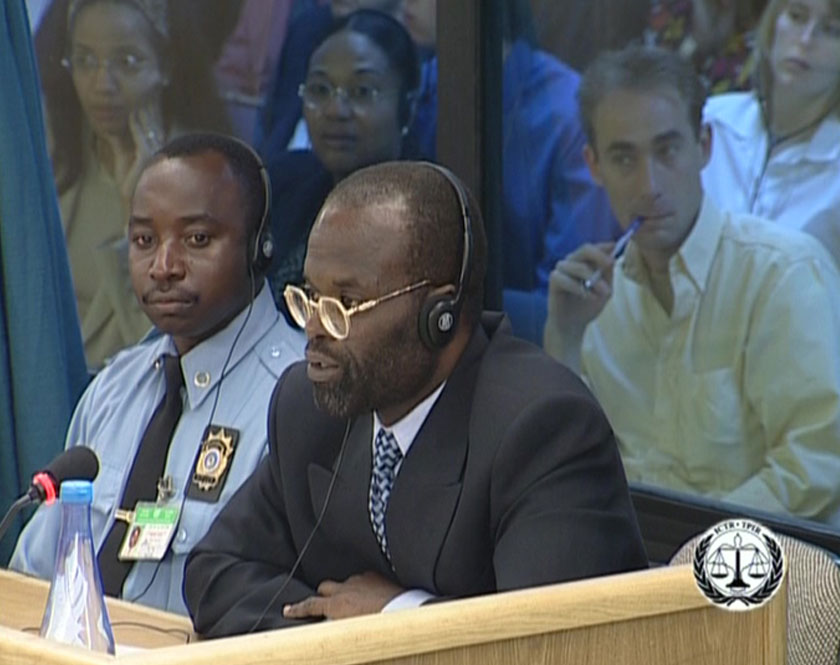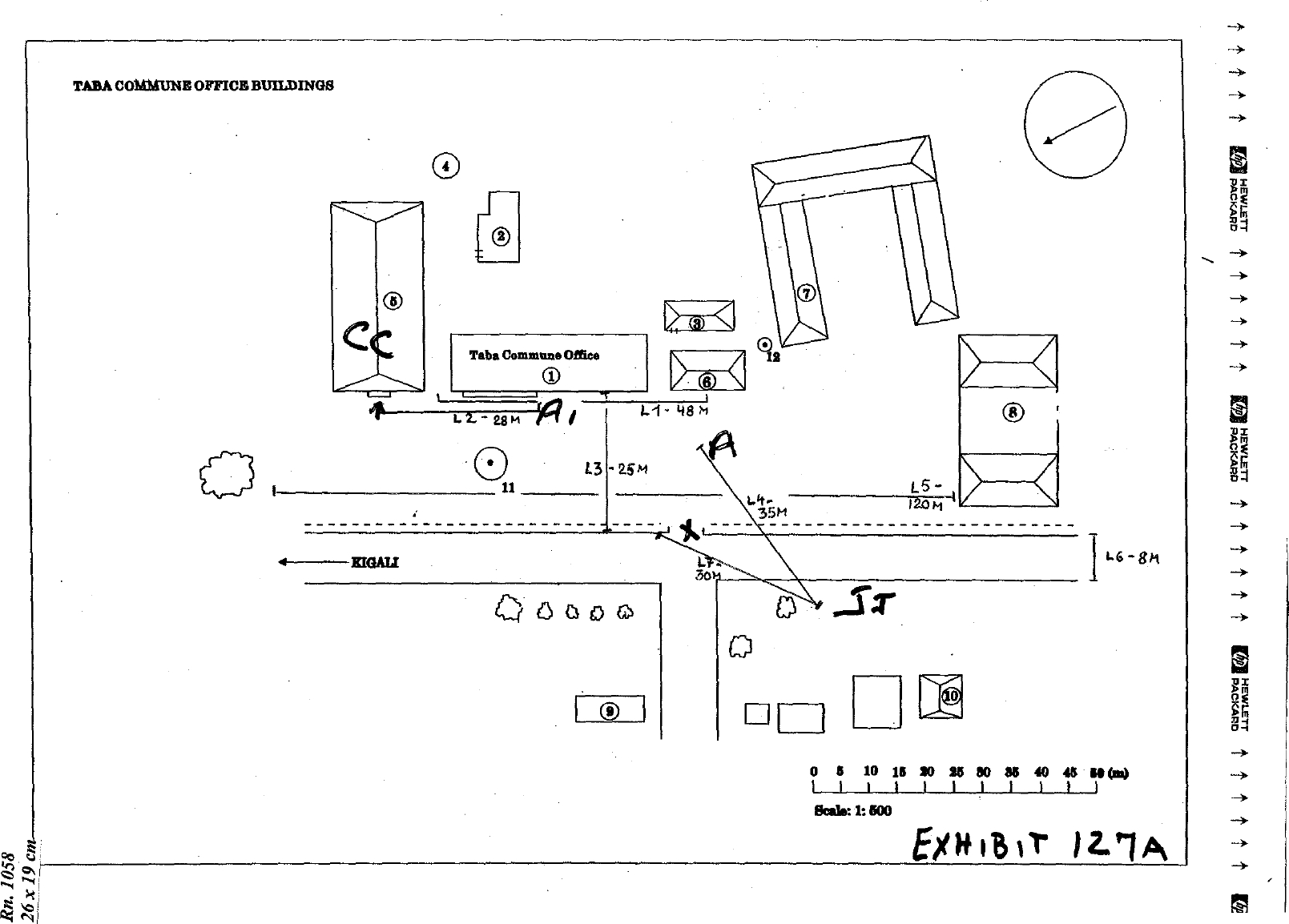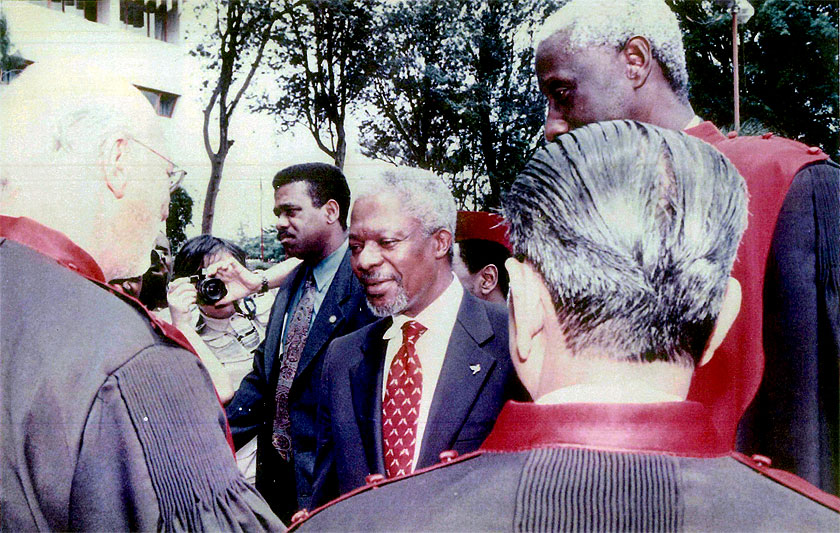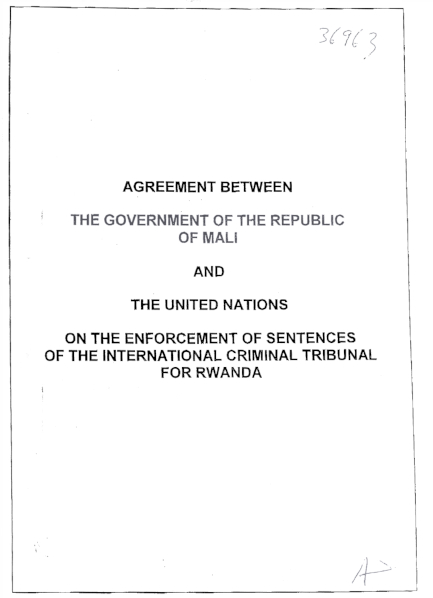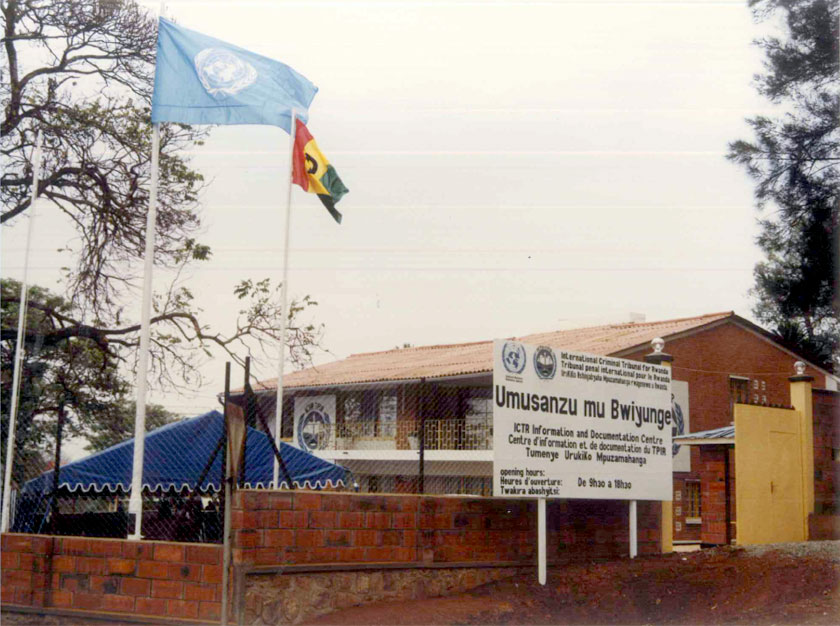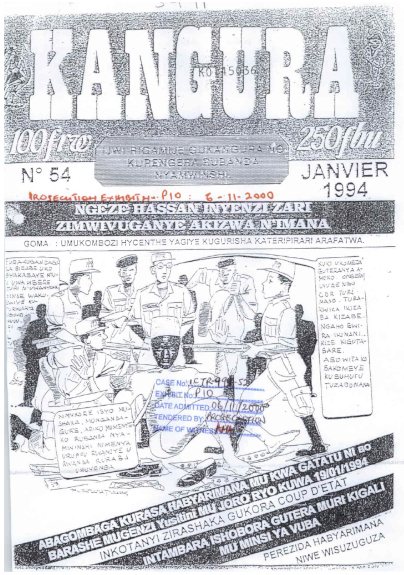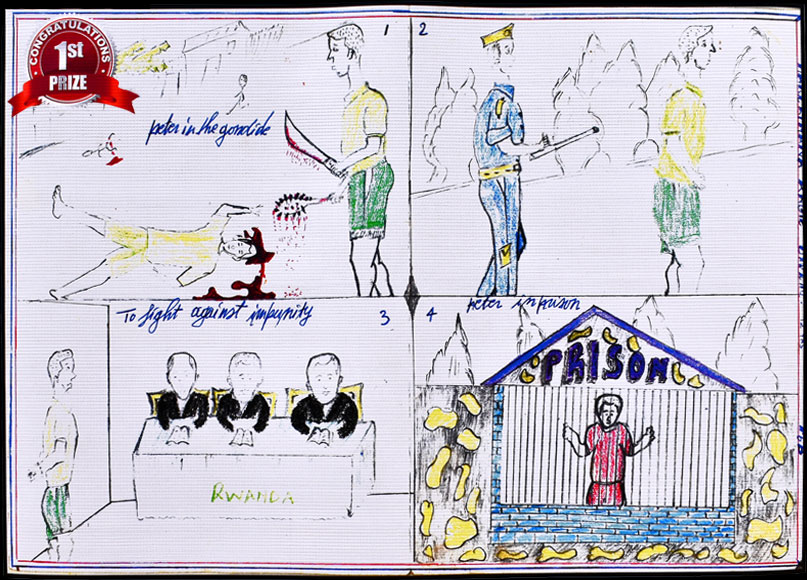ICTR:
LOOKING BACK
1995 »
Establishment of Arusha as the seat of the ICTR
Agreement between the United Nations and the government of
Tanzania regarding the location of the ICTR.
Download PDF
The Security Council assessed potential locations for the ICTR based on criteria of justice, fairness, administrative efficiency, and economy, and it also consulted with the governments of Rwanda and neighbouring countries. On 22 February 1995, the Security Council decided to locate the ICTR in Arusha, in the United Republic of Tanzania (Tanzania). The ICTR was the first international criminal tribunal established by the United Nations to have its seat in Africa.
Pictured is a copy of the 31 August 1995 agreement between the United Nations and the Tanzanian government concerning the headquarters of the ICTR. A similar agreement between the United Nations and Tanzania, dated 26 November 2013, regulates the arrangements for hosting the Arusha branch of the Mechanism.
1995 »
Adoption of the ICTR's Rules of Procedure and Evidence
ICTR Rules of Procedure and Evidence as adopted in 1995.
Download PDF
In May 1995, the United Nations General Assembly appointed six
Judges to the Chambers of the ICTR. An additional five Appeals
Chamber Judges from the International Criminal Tribunal for the
former Yugoslavia (ICTY) were appointed to the ICTR Appeals
Chamber. In June of that year, the Judges met for the ICTR’s first
plenary in The Hague and adopted the ICTR’s
Rules of Procedure and Evidence. The Rules defined the
responsibilities and organizational structure of the ICTR and set
forth the manner in which the ICTR’s proceedings and related
activities would be conducted.
Click the image to view a copy of the first version of the
Rules of Procedure and Evidence. The Rules were amended 21 times during the lifetime of the
ICTR, with the final revision being adopted on 13 May 2015.
1996 »
The first hearings
The first ICTR indictment, confirmed in November 1995 and
later amended, charged Clément Kayishema, the former
Préfet (Governor) of Kibuye Prefecture, and Obed
Ruzindana, a commercial trader in Kigali and in Rwamatamu
Commune, with multiple counts of genocide, crimes against
humanity, violations of the Geneva Conventions, and other
crimes. Separate indictments against Jean-Paul Akayesu, the
former Bourgmestre (Mayor) of Taba Commune, and
Georges Rutaganda, a businessman and military official, were
confirmed in February 1996.
The initial appearances for Akayesu and Rutaganda were held on
30 May 1996, while Kayishema’s initial appearance took place
on 31 May 1996. These hearings marked the first proceedings of
an international criminal tribunal to be held in Africa.
Because the ICTR’s courtroom had not yet been constructed, the
hearings took place in a conference room at the Arusha
International Conference Centre. At its peak period of
judicial activity, the ICTR had four courtrooms in operation
simultaneously and averaged nearly 60 hearing days per month.
Pictured below is a blueprint of two of the ICTR's courtrooms.
Upon completion of the ICTR’s mandate in 2015, the courtroom
equipment was donated to the government of Tanzania for use by
the Tanzanian Ministry of Justice.

Blueprint of two of the ICTR's courtrooms.
1996 »
Establishment of the ICTR's Detention Facility
During the second plenary of ICTR Judges, held in Arusha in
January 1996, the Judges adopted a document that assured
protection of the rights of individuals detained by the ICTR.
These
Rules Covering the Detention of Persons Awaiting Trial or
Appeal before the Tribunal or Otherwise Detained on the
Authority of the Tribunal [PDF]
formed the framework for establishing the ICTR’s United Nations
Detention Facility (UNDF), which was the only detention facility
purpose-built and managed by the United Nations. On 26 May 1996,
the first three accused persons were transferred to the UNDF.
Throughout the ICTR’s existence, the UNDF securely detained
accused and convicted persons while ensuring that they were
treated according to internationally recognized detention
standards.
Pictured are photographs of the UNDF. The facility continues to be
used by the Mechanism for the detention of accused persons, as
well as convicted persons awaiting transfer to an enforcement
State.
1996 »
Witness Support and Protection
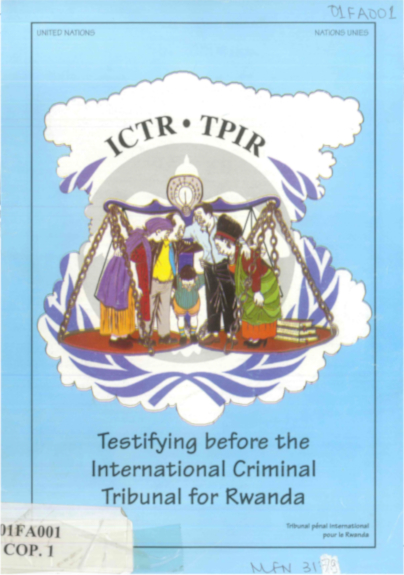
Booklet published to help witnesses understand the ICTR’s
judicial processes.
Download PDF
The ICTR’s Witness and Victims Support Section was established in June 1996 under the authority of the Registrar, to recommend and implement protective measures for victims and witnesses and to provide them with counselling and other medical support, particularly in cases of rape and sexual assault. The Unit expanded in 2004 with the establishment of a medical clinic at the ICTR’s Kigali Field Office. The medical clinic is one example of how services continued through the administrative transition from the ICTR’s Witness and Victims Support Section to the Mechanism’s Witness Support and Protection Unit.
Pictured is a booklet entitled Testifying before the International Criminal Tribunal for Rwanda. This booklet, published in 2000, was developed to improve witnesses’ understanding of their participation in the ICTR's judicial processes.
1998 »
Guilty Plea of Jean Kambanda
On 16 October 1997, the indictment against Jean Kambanda, the former Prime Minister of the Interim Government of Rwanda, was confirmed. This marked the first time a head of government was indicted by an international criminal tribunal. Kambanda entered a guilty plea on 1 May 1998, making him the first ICTR accused person to plead guilty to the crime of genocide. Despite the mitigating circumstances of his guilty plea, a Trial Chamber found that the gravity of his crimes and their “widespread, atrocious and systematic character”, as well as his failure to protect the people of Rwanda during his tenure as Prime Minister, justified a life sentence. The Appeals Chamber upheld Kambanda's life sentence in October 2000.
Pictured is an image of Jean Kambanda in court during the appeal proceedings in June 2000. Audio of his guilty plea on 1 May 1998 accompanies the image.
1998 »
The first trial judgement
In the first trial judgement issued by the ICTR, a Trial Chamber found that rape and other forms of sexual violence could constitute genocide, thereby establishing an important precedent in international criminal law. Jean-Paul Akayesu was convicted and sentenced to life imprisonment based, in part, on the evidence associated with victims of sexual assault, who testified that widespread sexual assault and rape was committed by Interahamwe soldiers in the Taba Commune under the direction of Akayesu. Akayesu’s convictions and sentence were later upheld by the Appeals Chamber.
Pictured is Exhibit P127A, which was admitted into evidence in the Akayesu case (ICTR-96-4) and shows the Taba Commune office building where, according to multiple witnesses, widespread sexual assault and rape was committed by soldiers under the direction of Jean-Paul Akayesu. Audio from the trial judgement delivery in this case accompanies the image.
1998 »
United Nations Secretary-General Kofi Annan visits the ICTR
Over the course of its existence, the ICTR hosted a number of dignitaries including United Nations Secretary-General Kofi Annan; United Nations Secretary-General Ban Ki Moon; Hillary Rodham Clinton, then-First Lady of the United States of America; Her Royal Highness Princess Anne of the United Kingdom; and His Excellency Jerry Rawlings, former President of the Republic of Ghana.
Pictured is a photograph from the visit of United Nations Secretary-General Kofi Annan in 1998.
1999 »
Enforcement of Sentences Agreement
Enforcement of Sentences Agreement between the ICTR
and the Government of the Republic of Mali.
Download PDF
As the earliest cases before the ICTR came to a close, those convicted by the Tribunal began serving their sentences at the ICTR’s detention facility (UNDF) in Arusha. Seeking a longer-term solution, the ICTR entered into negotiations with the governments of various countries to establish agreements for the enforcement of sentences imposed by the ICTR. The first such agreement, signed on 12 February 1999, was with the government of the Republic of Mali, followed by a similar agreement with the government of the Republic of Benin, signed on 26 August 1999. The final agreement, with the government of the Republic of Senegal, was entered into on 22 November 2010.
Pictured is the covering page of the enforcement of sentences agreement between the ICTR and the government of the Republic of Mali. These States continue to work in close cooperation with the Mechanism to ensure that secure prison facilities are provided for the individuals sentenced by the ICTR and that they are treated in accordance with internationally recognized detention standards.
2000 »
Umusanzu Information and Documentation Centres
By late 2000, with judicial activity well underway, the ICTR’s focus expanded to include an Outreach Programme, which was established with the objective of disseminating information about the work of the Tribunal, and facilitating research in relation to its caselaw as well as the Genocide against the Tutsi in Rwanda. On 25 September 2000, the ICTR opened the first Information and Documentation Centre (Umusanzu mu Bwiyunge, Kinyarwanda for “contribution to reconciliation”) in Kigali. By 2005, a total of ten smaller Umusanzu Centres had been opened throughout Rwanda. The Umusanzu Centres facilitated the dissemination of information at the grassroots level and were used to host events such as capacity-building programs, exhibitions and awareness-raising workshops.
Displayed is a gallery of photos from the opening of the Umusanzu Centre in Kigali in September 2000. As part of the downsizing and planned closure of the ICTR, the Umusanzu Centres were handed over to the government of Rwanda in December 2014. They continue to act as valuable resource facilities for the people of Rwanda.
2003 »
The Media Case
Based on the similar nature of the charges against them and allegations that they had conspired with each other, Ferdinand Nahimana, Jean-Bosco Barayagwiza, and Hassan Ngeze were jointly tried by the ICTR. The Nahimana et al. case (ICTR-99-52) became known as the Media case because it was alleged that the accused had used their high-level positions working with the newspaper Kangura and the radio station RTLM to incite genocide. The Media Case examined the criminal responsibility of those alleged to have published and broadcast propaganda and hate speech, and the role played by the media with respect to the atrocities committed in Rwanda in 1994. In 2003, a Trial Chamber found all three accused persons guilty of genocide and other crimes. In 2007, the Appeals Chamber reduced the life sentences imposed by the Trial Chamber on Nahimana and Ngeze to 35 years of imprisonment, and reduced the 35 year sentence imposed on Barayagwiza to 32 years of imprisonment.
Pictured is the cover page of Exhibit P10, being the January 1994 edition of Kangura, which was admitted into evidence in the Media Case on 6 November 2000.
2004 »
Testimony of UNAMIR Force Commander
Testimony of UNAMIR Force Commander Lieutenant-General Roméo Dallaire.
The United Nations Assistance Mission in Rwanda (UNAMIR), which was established in October 1993 to facilitate the implementation of the peace agreement designed to end the Rwandan civil war, faced significant limitations on its rules of engagement and military resources. UNAMIR documents and the testimony of former UNAMIR officials were used extensively as evidence in ICTR proceedings. The Mission’s Force Commander, Lieutenant-General Roméo Dallaire, testified in the Akayesu case in 1998, the Bagosora et al. (Military I) case in 2004, and the Ndindiliyimana et al. (Military II) case in 2006.
Presented is an excerpt from Lieutenant-General Dallaire’s 2004 testimony in the Military I case. Dallaire’s experiences with UNAMIR have prompted him to become an outspoken supporter of raising awareness for issues related to veterans’ health and post-traumatic stress disorder, as well as for eradicating the use of child soldiers.
2006 »
The Appeals Chamber takes judicial notice of the Genocide in Rwanda
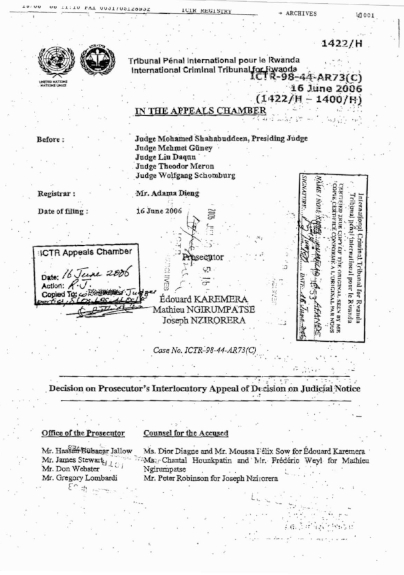
The Appeals Chamber’s decision taking judicial notice of the
genocide in Rwanda.
Download PDF
In June 2006, the Appeals Chamber issued a decision on judicial notice in the Karemera et al. case (ICTR-98-44), finding that genocide had taken place in Rwanda. In doing so, the occurrence of the 1994 Genocide against the Tutsi was recognized as an established fact beyond dispute. The Appeals Chamber noted:
“There is no reasonable basis for anyone to dispute that, during 1994, there was a campaign of mass killings intended to destroy, in whole or at least in very large part, Rwanda’s Tutsi population […] The fact of the Rwandan genocide is a part of world history, a fact as certain as any other, a classic instance of a 'fact of common knowledge'.”
Presented is the decision on judicial notice issued by the Appeals Chamber. This was cited in the United Nations Security Council’s Resolution on the prevention and fight against genocide and other serious crimes under international law (S/RES/2150), adopted by the Security Council on 16 April 2014.
2010 »
ICTR Youth Painting and Essay Competition
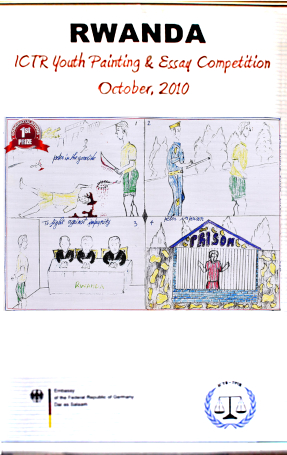
Banner of the essay and drawing competition
organised by the ICTR Outreach Programme in 2010.
In an effort to raise awareness among young people in the region with respect to the global fight against the culture of impunity, the ICTR Outreach Programme organized a Youth Painting and Essay Competition for East African students. Hundreds of submissions from Burundi, Kenya, Rwanda, Tanzania, and Uganda were entered into the competition. The first prize winners in each category from each country attended the award ceremony held in Arusha on United Nations Day in 2010.
Pictured is the entry submitted by the first prize winner from Rwanda in the painting competition.
2011 »
First Edition of the Special Bibliography
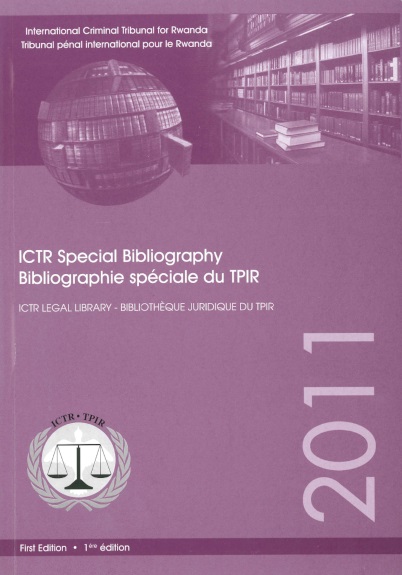
The cover of the first edition of the ICTR’s Special
Bibliography.
Download PDF
The ICTR’s Library, recognized as the premier legal reference library in the East African region, provided research and reference support to both ICTR staff and external researchers for many years, following its establishment in 1998. In 2011, the Library published the first edition of the Special Bibliography on the ICTR. Developed within the context of the ICTR’s legacy programme, the Special Bibliography provided researchers with access to information on a range of published materials relating to the work of the ICTR, including the Tribunal’s establishment, its cooperation with national courts, its case law, and its contribution to the field of international criminal law.
Presented is the cover of the first edition of the Special Bibliography. The Library, now managed by the Mechanism, continues to publish updated versions of the Special Bibliography, which has been expanded in scope to also include publications related to the ICTY and the Mechanism. The latest edition was published in 2020.
2011 »
Publication of "100 Days in the Land of the Thousand Hills"
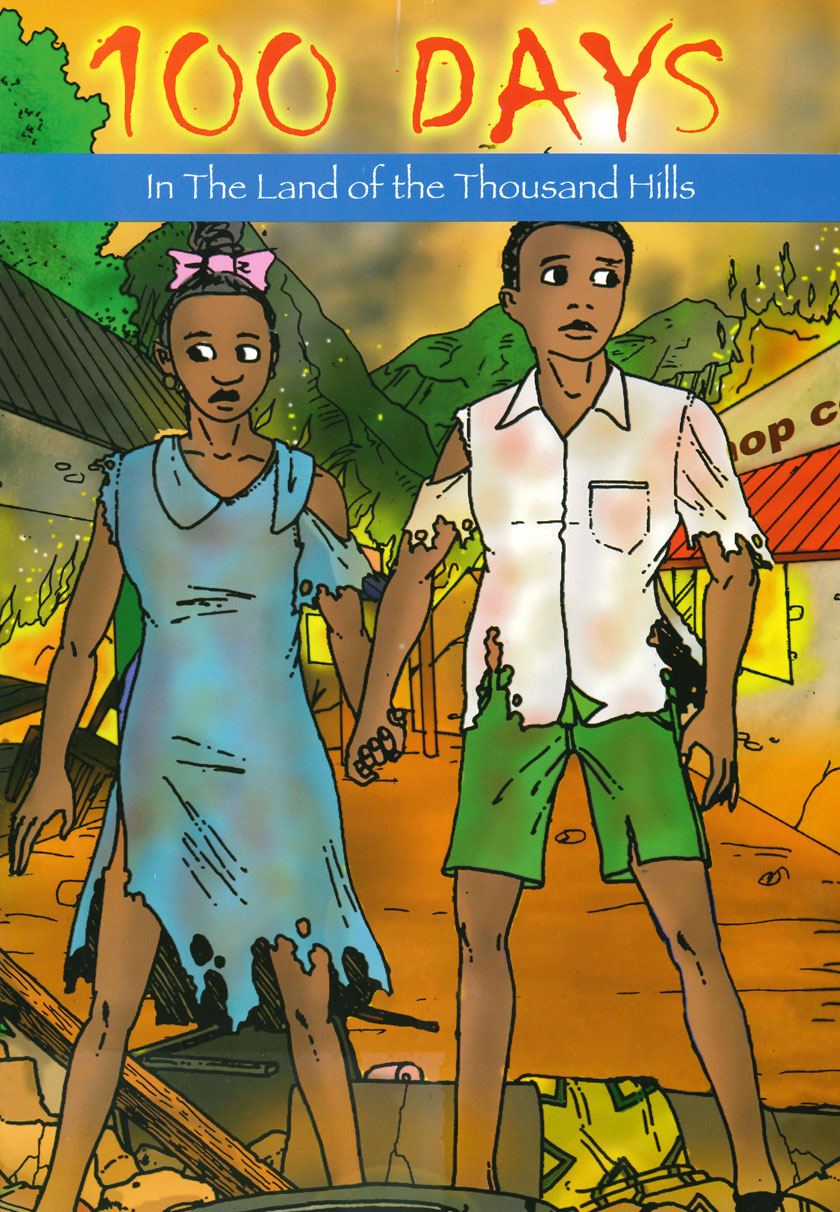
The graphic novel, “100 Days in the Land of the Thousand Hills”.
Download PDF
The ICTR published a graphic novel in 2011 to raise awareness about the Genocide against the Tutsi amongst the young people of East Africa, and to encourage them to actively participate in genocide prevention efforts. The document was part of the ICTR’s youth sensitization project, a component of the ICTR’s Outreach Programme. Topics covered in the book included the causes and dynamics of genocide. Copies of the book were distributed to primary and secondary schools throughout Burundi, Kenya, Rwanda, Tanzania and Uganda.
Presented is the graphic novel entitled 100 Days in the Land of the Thousand Hills, published as part of the ICTR Outreach Programme.
2012 »
Transfer of Uwinkindi to Rwanda

The monitoring report for Uwinkindi’s case in Rwanda for July
and August 2013.
Download PDF
During the ICTR’s twelfth Plenary of Judges, held in 2002, the Judges amended the Rules of Procedure and Evidence by adopting Rule 11 bis, which permitted the referral of an ICTR case to the jurisdiction of a national court. In June 2011, a designated Referral Chamber granted the Prosecutor’s motion to transfer Jean Uwinkindi’s case to Rwanda. The Appeals Chamber upheld this decision in December 2011 and, in April 2012, Uwinkindi became the first accused to be transferred to Rwanda under Rule 11 bis.
The Mechanism continues to monitor the progress of three ICTR cases referred to Rwanda – those of Jean Uwinkindi, Bernard Munyagishari and Ladislas Ntaganzwa – as well as the case of Laurent Bucyibaruta, which was referred to France. The monitors provide the President of the Mechanism with regular reports.
Presented is the monitoring report regarding Jean Uwinkindi’s case in Rwanda for July and August 2013.
2014 »
Lessons Learned and Best Practices for International Prosecutors
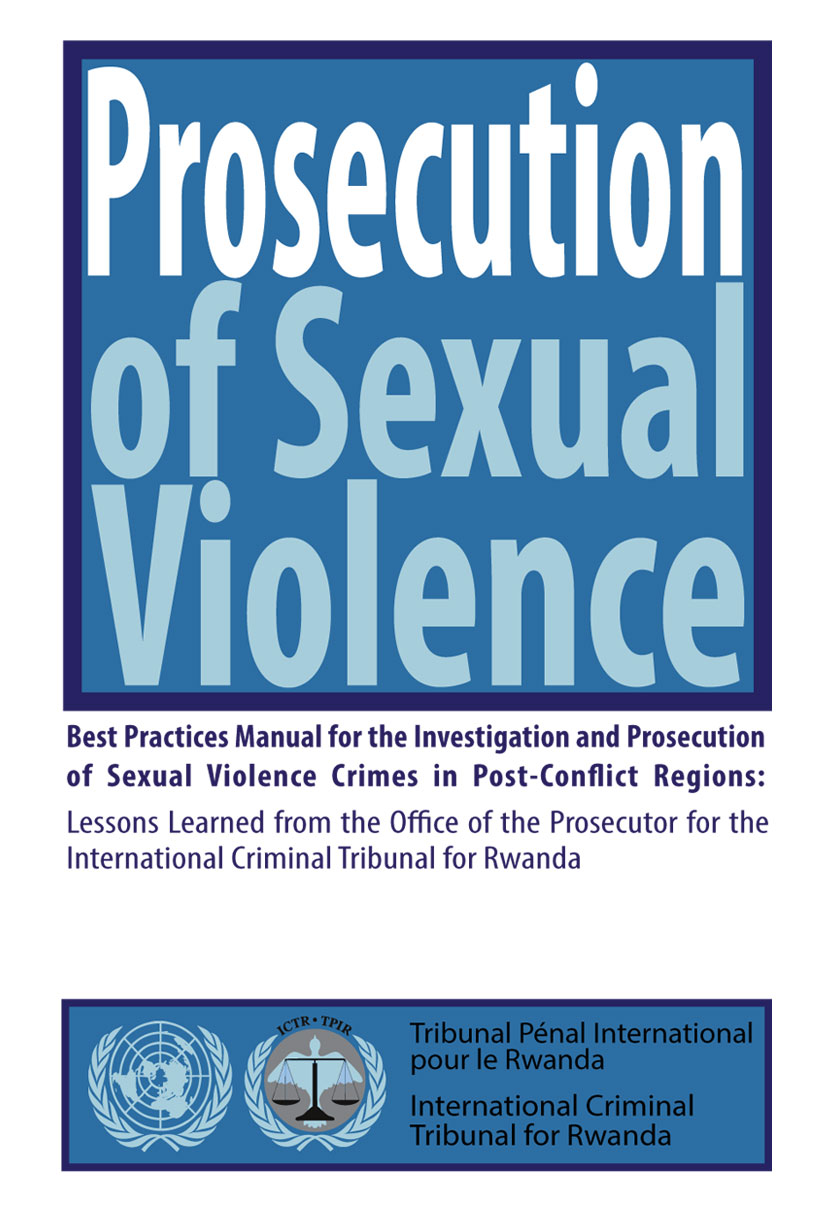
The Best Practices Manual for the Investigation and
Prosecution of Sexual Violence in Post-Conflict Regions.
Download PDF
As a part of the commemoration of the 20-year anniversary of its establishment, the ICTR hosted the 7th Colloquium for International Prosecutors in November 2014. The Colloquium was attended by the Prosecutors of all international and hybrid tribunals and 20 national Prosecutors from around the world, as well as representatives of regional courts, academic institutions and non-governmental organizations. It provided an opportunity to discuss the challenges and prospects for local prosecution of international crimes. Throughout the ICTR’s existence, its Office of the Prosecutor (OTP) was committed to sharing lessons learned and contributing to the development of best practices in the field of prosecuting international crimes.
Presented is the Best Practices Manual for the Investigation and Prosecution of Sexual Violence in Post-Conflict Regions, developed by the OTP. This Manual provides practical recommendations to assist and guide future prosecutions.
2015 »
The Fugitives
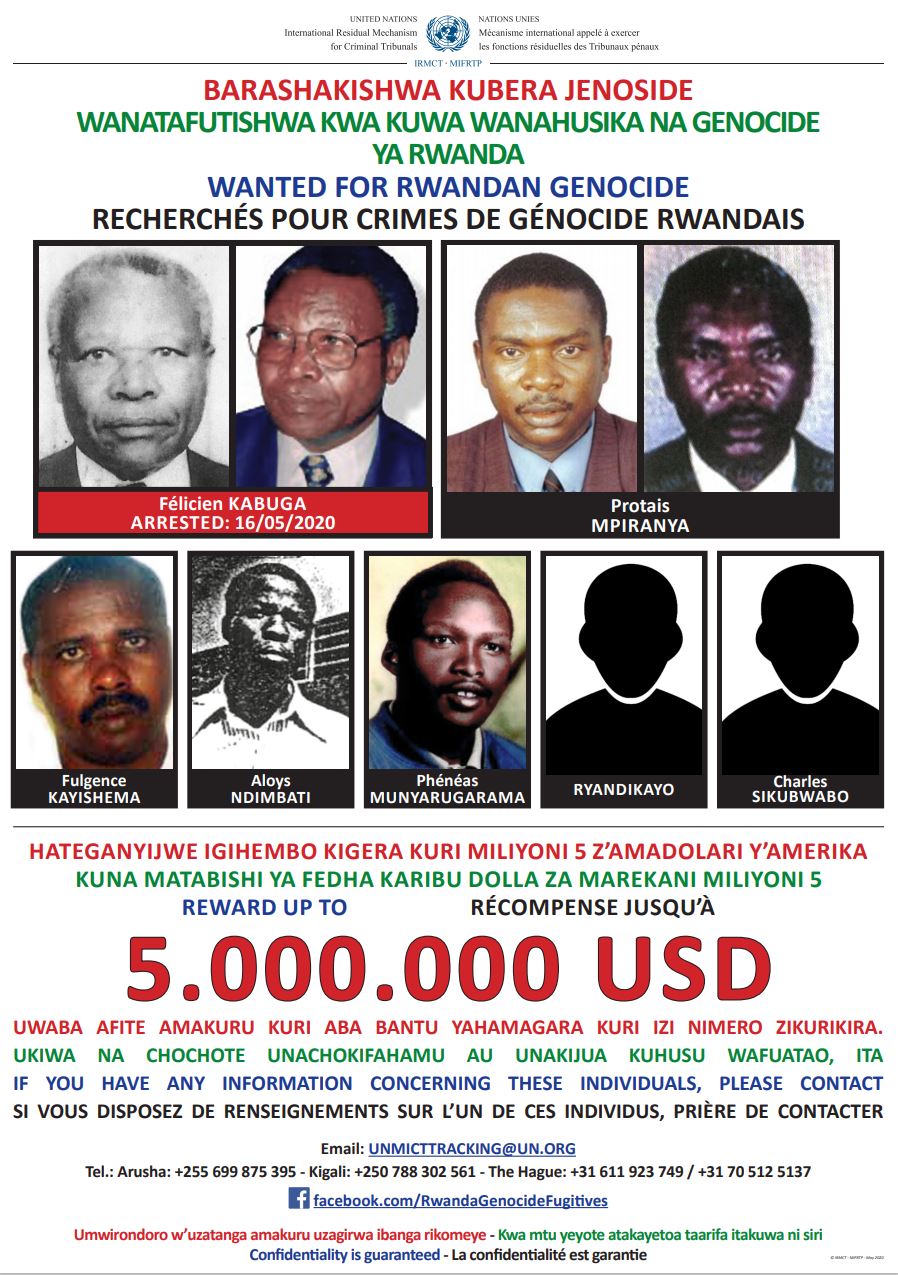
Poster requesting information about the remaining fugitives.
Download PDF
The ICTR indicted ninety-three individuals alleged to be most
responsible for the serious violations of international
humanitarian law committed in Rwanda in 1994. They included
high-ranking military and government officials, politicians,
businessmen, and religious and media leaders. The delivery of the
Appeal Judgement
in the Nyiramasuhuko et al. (Butare) case in December
2015 marked the conclusion of the ICTR’s final proceedings. After
the Tribunal’s closure, the Mechanism assumed responsibility for
tracking the remaining ICTR fugitives.
Following the arrest in May 2020 of Félicien Kabuga, a Rwandan
businessman and founder of Radio Télévision Libre des Mille
Collines, and confirmation of the death of another fugitive,
Augustin Bizimana the same month, six accused currently remain at
large. The case of Protais Mpiranya is expected to be tried by the
Mechanism, while the cases of Fulgence Kayishema, Phénéas
Munyarugarama, Aloys Ndimbati, Ryandikayo (first name unknown),
and Charles Sikubwabo were referred to the authorities of Rwanda
for prosecution. The search for the remaining fugitives continues.
Pictured is the latest version of the poster from May 2020 requesting information from the public about the potential whereabouts of the remaining fugitives.
